Engineered microlens arrays provide new control for display and lighting applications.
Tasso R.M. Sales, Stephen Chakmakjian, G. Michael Morris and Donald J. Schertler, RPC Photonics Inc.
From sophisticated deep-UV steppers to indoor-outdoor lighting applications, passing through rear-projection television screens and consumer electronic displays, one finds a common optical component: diffusers.
These devices homogenize and distribute light over a specified region of space. Diffusers are an example of a more general class of components known as beam shapers, whose main purpose is to alter and project an input beam into a useful angular range with controlled intensity distribution.
The advanced diffusion and beam-shaping capabilities of a new class of diffusers make them suitable for most applications that require a homogeneous light distribution with a specified intensity profile and spatial distribution. These applications include laser illumination, projection and display systems, and solid-state lighting.
Commonly used diffuser technologies include prismatic glass integrating bars, ground glass, opal glass, holographic diffusers and diffractive diffusers. Prismatic glass integrating bars, though sometimes used in high-end systems, are very limited in capability, are expensive and occupy a great deal of precious space. Ground and opal glass scatter light equally in all directions but have limited light-control capabilities. These simple diffusers also often offer poor efficiency.
A holographic diffuser, a step ahead of ground glass, enables the production of simple light distribution patterns. However, it has limited control over the light distribution pattern, generally making only round or elliptical patterns with nonuniform intensity variation, typically of a Gaussian nature.
Diffractive elements can, at least in theory, shape an input beam arbitrarily. They are, however, mostly limited to monochromatic applications with coherent light sources. Fabrication requirements limit diffractives to narrow diffusion angles. These elements also can be strongly sensitive to input beam variations, and they present the well-known problem of zero order: a bright spot collinear with the incident beam. In many applications, the zero order is unacceptable, and the requirement of single-wavelength operation very restricting.
New technology
A new diffuser and beam-shaping technology can challenge some of these drawbacks and provide significant performance enhancements for applications such as lithographic systems, efficient solid-state lighting, backlighting, projection screens and displays. This concept, trademarked as Engineered Diffusers, differs from other technologies in numerous ways.
Unlike random diffusers such as ground glass, opal glass and holographic elements, these devices control each scatter center, generally with microlens units. Holographic diffusers, for instance, can be seen as a random arrangement of lenslets. However, the lenslike features are created by the holographic exposure process and are controlled only in a statistical sense: Individual microlens units are not individually manipulated, which helps to explain why holographic diffusers cannot control light distribution and profile.
An Engineered Diffuser individually specifies each microlens unit with respect to its sag profile and its location in the array. Furthermore, to ensure that the diffuser can handle input beam variations and does not produce diffraction artifacts, the distribution of microlenses is randomized according to probability distribution functions chosen to implement the desired beam-shaping functions. Therefore, this device retains the best properties of both random and deterministic diffusers.
Deep, continuous surface
Microlens arrays have provoked continual interest as fabrication capabilities have matured over the years. Some of their applications, such as Shack-Hartmann interferometry, laser-to-fiber coupling and optical switching for telecommunications, have little to do with light diffusion. Still, periodic microlens arrays work in illumination systems with a condenser lens by relying on the source’s low coherence and convolution effects.
Periodic microlens arrays are not, strictly speaking, diffusers, and they provide limited beam-shaping capabilities. Even so, most rear-projection TV screens still use them; e.g., lenticular (cylindrical) arrays. To eliminate artifacts from the periodic nature of the array, screen manufacturers add volume and surface diffuser components to homogenize the scatter and to add vertical gain at the cost of reduced resolution and speckle.
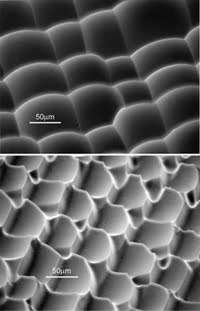
Figure 1. Close-packed arrays of accurately and independently produced microlenses offer some advantages for projection screen applications (top) and display brightness enhancement (bottom).
At the heart of the Engineered Diffuser technology is the capability to manufacture a close-packed array of accurately and independently produced microlenses, each designed to a unique lens prescription and spatially distributed in an arbitrary fashion (Figure 1). The array maintains a 100 percent fill factor even with variations in the shape of each lens boundary. Furthermore, the manufacturing process can control the diameter of each microlens unit and the relative vertical position of each microlens (piston).
Manufacturing these devices involves processing photoresist materials about 50 to 160 μm thick, much thicker than commonly used in lithography. A laser system1 exposes thick photoresist point by point in a raster scan mode with a small focused beam (Figure 2). The system modulates the laser beam as it traverses the coated substrate. Developing the photoresist produces a deep, continuous surface.
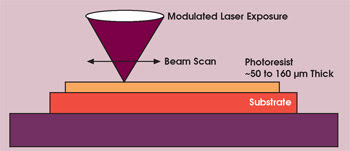
Figure 2. To manufacture the diffusers, a modulated laser exposes a thick photoresist point by point in a raster scan mode with a small focused beam.
Despite the innovative processes used in making the diffusers, the cost per piece is comparable to that of components that rely on conventional photolithographic fabrication techniques. The main cost item constitutes the production of the initial photoresist master, in which a laser writing session can take from less than an hour to several days, depending on the required pattern size. The master can then be transferred to more durable material with methods such as etching, replication or nickel electroforming, as dictated by the application. From this point, techniques such as embossing or injection molding can be used to produce volume quantities at costs comparable to those of other diffuser components on the market.
Displays and lasers
Such a microlens array could work in projection screens and enhance display brightness. Projection screen applications are particularly challenging because they require wide angle divergence — 120° full width at half maximum — in one direction (horizontal) and narrow divergence — 40° FWHM — in the other (vertical), with controlled intensity profiles. Because it is a visual application, a projection screen cannot introduce image or color defects and should not introduce speckle. Also, the screen geometry must incorporate a black-absorbing material to prevent ambient light from reflecting to the viewer, thus maximizing image contrast. Illumination from the light engine transmits through apertures created by the focusing elements of the screen itself.
The Engineered Diffuser enables the design of screens2 that meet the desired intensity profile within the field of view. Also, it can control the near-field distribution of focus spots to maximize the coverage of black material and to improve contrast. Finally, controlling the size of the microlens units with regard to the light engine’s coherence properties avoids speckle while maintaining high resolution.
Controlling individual microlens elements and arbitrarily distributing them in the array enables advanced beam-shaping and features that are not possible with diffractives or any other diffuser technology. For instance, these devices perform equally well under monochromatic or broadband illumination with no zero-order or diffraction artifacts, irrespective of the divergence angles.
An application of particular interest is the shaping and homogenization of laser beams. Most diffuser technologies have little difficulty generating, for example, round diffusion patterns. However, in most cases, the pattern has nonuniform Gaussian intensity profiles (such as the case of ground glass and holographic diffusers) or small divergence angles with some degree of zero order (such as diffractive diffusers). Periodic microlens arrays cannot generate round diffusion, but a hexagonal array can approximate a circle.
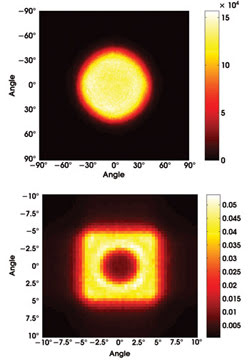
Figure 3. The measured intensity profile from an Engineered Diffuser illuminated with a coherent helium-neon laser beam shows wide, round scatter with a flat intensity profile (top) and square scatter with a center hole (bottom). A source of different wavelength produces the same profile with a slight variation in divergence angle because of the change in the microlens material’s index of refraction.
Engineered Diffusers, however, can generate round patterns with uniform intensity distribution over any angular range, independent of wavelength (Figure 3). They also can generate more-complex scatter patterns that are usually attainable only with diffractive elements.
LED efforts
An important emergent application for these diffusers is in solid-state lighting. LED-based illumination systems will become more pervasive in applications including displays, signage, architectural lighting and general illumination. Some of the advantages that LED sources offer are longer lifetimes, and cost and energy savings.
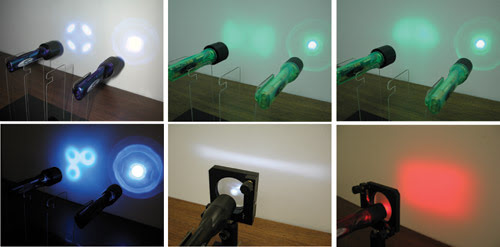
Figure 4. Diffusers based on new technology perform beam shaping and homogenization of LED light sources.
Engineered Diffusers address the diffusion and control of LED illumination with efficient distribution of the available luminous energy. In typical cases, the technology can improve the efficiency of solid-state light utilization by a factor of two or more (Figure 4).
For example, they can direct most of the light into specific regions of space, thereby increasing the efficiency of light usage. These targeted light distributions will also be relevant in reducing light pollution and improving the quality and effectiveness of displays by creating effects that would otherwise be impossible to achieve with the raw beam alone or with simple diffusers. Also, the diffusers can mix light from RGB arrays, managing the color temperature by controlling the content of the red, blue and green components, while shaping the mixed light distribution (Figure 5).
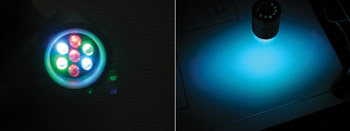
Figure 5. An Engineered Diffuser simultaneously mixes an RGB LED array (left) and shapes the light into an oval scatter distribution with wider divergence in one direction (right).
References
1. D.H. Raguin, G. Michael Morris and P.M. Emmel. Method for making optical microstructures having profile heights exceeding fifteen microns. US Patent No. 6,410,213 B1.
2. Tasso R.M. Sales. High-contrast screen with random microlens array. US Patent No. 6,700,702.
Meet the authors
Tasso R.M. Sales is vice president of R&D at RPC Photonics Inc. in Rochester, N.Y. Stephen Chakmakjian is chief technical officer, G. Michael Morris is CEO and Donald J. Schertler is senior optical scientist at the company.